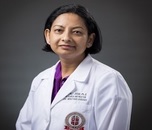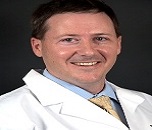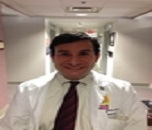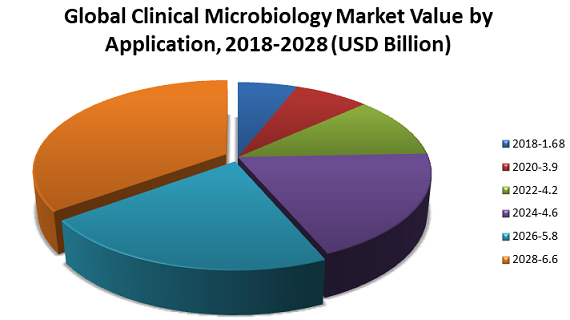Sessions/Tracks
Track 1: Clinical Microbiology
Clinical microbiology is the study of microorganisms that cause infections in humans. Clinical microbiology is a specific combination of knowledge and practice aimed at direct clinical participation in the management of infectious diseases, using the basic principles of medical microbiology and clinical medicine. Clinical microbiology includes working in the clinic and testing blood samples from patients. It also includes patient case studies and illness diagnosis. In the future, faster diagnosis, better standardization of tests, and better adaptability to new threats from infectious microorganisms such as bioterrorist pathogens and new pathogens will be required.
Clinical microbiology begins with the patient presents signs of infection to the physician. An initial diagnosis is made, and the physician and orders diagnostic medical and laboratory procedures. A direct stain, a culture, and an antibiotic susceptibility test are typical test that may involve the micro biology laboratory. Early diagnosis is associated with early treatment and a better prognosis for the patient. Testing must be performed in a timely yet accurate, manner. Evidence of suspicion is often sent to the doctor so that antibiotic therapy can be started. Then the final identification is sent and the report is updated.
Related Associations and Societies
American Society for Microbiology, American Academy of Microbiology, Canadian Society of Microbiologists, , Brazilian Society of Microbiology, German Society of Hygiene and Microbiology, Spanish Society for Microbiology ,Swedish Society for Microbiology, National Multiple Sclerosis Society
Track 2: Microbial Evolution
Microbial evolution refers to the genetic changes that occur in a microorganism and are maintained over time. Changes in some microorganisms can occur in response to selective pressure. The best example of this is the variety of changes that can occur in bacteria depending on the presence of antibiotics. These changes can make a single bacterium less sensitive or completely resistant to the killing effects of one or more antibiotics. Changes in other microorganisms can occur randomly without selective pressure. These changes can be traced back to changes in the sequence of units (nucleotides) that make up the genetic material of an organism, giving them an advantage over unchanged organisms. In classical evolutionary scenarios, such beneficial properties are retained and may be passed on to future generations of the organism.
Gene transfer between bacteria can also occur between species that are not related to each other. This so-called horizontal gene transfer is an important form of evolution of naturally occurring microorganisms and can be important in the case of infectious diseases, such as when acquiring genes that determine antibiotic resistance.
Related Associations and Societies
Australasian Microbiology Society, Brazilian Society of Microbiology, German Society of Hygiene and Microbiology, Italian Society for Microbiology, Spanish Society for Microbiology, Swedish Society for Microbiology
Track 3: Corona Virus (COVID-19)
Covid's disease (COVID19) is a fascinating disease caused by the newly discovered Covid. This includes the vast number of infectious diseases that cause respiratory and intestinal disorders in living organisms and humans, such as Middle East respiratory illness and severe acute respiratory syndrome. Covids is a zoonotic disease. That means they are communicating between creatures and people. Definitive research revealed that SARSCoV was transmitted from civets to the population and MERSCoV was transmitted from dromedary to the population. Some known Covids have spread to creatures that are not yet contaminated by humans.
Related Associations and Societies
German Society of Hygiene and Microbiology¸ Italian Society for Microbiology¸ Spanish Society for Microbiolog¸ Swedish Society for Microbiology ¸Viruses: National Multiple Sclerosis Society¸ Infectious Diseases Society of America¸Swiss Society for Infectious Disease.
Track 4: Modes of Transmission-Routes of infections
Infectious diseases can be transmitted by several routes, which can be categorized as direct or indirect modes of transmission. The etiological agent that is the microorganism that has caused the infection. The reservoir of infection refers to the origin of etiological agent or its location such as contaminated food, another human, or an infected animal.
Control and prevention of infection depends on stopping the transmission of the pathogen from the source of infection (infected animal or human) to a new host (animal or human) or location. Identifying effective preventive and control measures against not only specific diseases, but also other similarly transmitted pathogens, including unexpected infections, by understanding the transmission route of the disease and its contribution to the spread of the organism. Microbial transmission can be divided into five major routes:
-
direct contact
-
pathogens
-
aerosols (in the air)
-
Oral (ingestion)
-
vector infections.
Some microbes can be transmitted in multiple ways.
Related Associations and Societies
American Society for Microbiology, American Academy of Microbiology, Canadian Society of Microbiologists, , Brazilian Society of Microbiology, German Society of Hygiene and Microbiology, Spanish Society for Microbiology ,Swedish Society for Microbiology, National Multiple Sclerosis Society
Track 5: Food Microbiology
Food microbiology involves microorganisms that inhibit, produce, or contaminate food. This includes research on microorganisms that spoil food. Pathogens that can cause illness (especially if the food is improperly cooked or stored); Microbes have been used to make fermented foods such as cheese, yogurt, bread, beer and wine. Microorganisms with other beneficial roles, such as the production of probiotics. Food microbiology studies the role of microorganisms in food. It covers not only aspects of microbial ecology in food, but also the use of microorganisms to produce ingredients and food. In addition, some microorganisms pose major public health challenges as they can cause illness. Food preservation aims to inactivate and control the growth of perishable and pathogenic microorganisms to ensure long-lasting, healthy food. Therefore, ongoing efforts have been made among the food industry, government, and society to improve statistical sampling and microbiological methods to understand the mechanisms that influence the fate of microorganisms in food.
Related Associations and Societies
Australasian Microbiology Society, Brazilian Society of Microbiology, German Society of Hygiene and Microbiology, Italian Society for Microbiology, Spanish Society for Microbiology, Swedish Society for Microbiology.
Track 6: Microbial Genetics
Microbial Genetics is a field of microbiology and genetic engineering. Microbial genetics studies microorganisms for a variety of purposes. The observed microorganisms are bacteria and archaea. Several fungi and protozoa have also been studied in this area. Various types of recombination are known for microorganisms. The most common form is general recombination, which usually involves the exchange of DNA between a pair of DNA sequences. It occurs throughout the chromosomes of microorganisms and is characterized by bacterial transformation, bacterial recombination, and exchanges that occur during bacterial transduction. This session includes:
1. Gene Expression
2. Gene Regulation
3. DNA Replication & Mutation
4. Mechanisms of Gene Transfer
Related Associations and Societies
Australasian Microbiology Society, Brazilian Society of Microbiology, German Society of Hygiene and Microbiology, Italian Society for Microbiology, Spanish Society for Microbiology, Swedish Society for Microbiology.
Track 7: Molecular Cloning
Molecular cloning is an essential technique for creating DNA-based experimental tools for expression in bacterial or mammalian cells. Examples of such DNA constructs include promoter elements fused to reporter genes or cDNA sequences under the control of ubiquitous promoters. Molecular cloning includes preparation of vector and insert DNA, ligation of inserts into the vector, transformation of competent E. coli, and identification of positive clones.
Molecular cloning creates multiple molecules. Cloning is often used to amplify fragments of DNA that contain the entire gene, but it can also be used to amplify any DNA sequence, such as a promoter or non-coding sequence or randomly fragmented DNA. It is used in a variety of biological experiments and practical applications, from gene fingerprinting to large-scale protein production. The term cloning is sometimes misleadingly used to refer to the identification of chromosomal positions in genes associated with a particular phenotype of interest, such as location cloning. In practice, the location of a gene on a chromosome or genomic region does not necessarily allow the isolation or amplification of related genomic sequences. In order to amplify an organism's DNA sequence, it must be linked to the origin of replication. An origin of replication is a DNA sequence that can direct the replication of a sequence linked to itself However, many other functions are required, protein production, affinity labeling, single-strand RNA or DNA production, and hosts enable other molecular biology tools.
Cloning a DNA fragment basically involves four steps
Related Associations and Societies
Australasian Microbiology Society, Brazilian Society of Microbiology, German Society of Hygiene and Microbiology, Italian Society for Microbiology, Spanish Society for Microbiology, Swedish Society for Microbiology.
Track 8: Molecular Biology
In the field of molecular biology, we are studying the mechanisms of molecules found in living organisms, such as the molecular properties of genes and the mechanisms of gene replication, mutation, and expression. Given the fundamental importance of these polymer mechanisms in the history of molecular biology, a philosophical focus on the concept of mechanisms was used by philosophers of the history, concepts, and science of molecular biology. Get the clearest picture of the case study.
Molecular biology also plays an important role in understanding the structure, function, and internal control of individual cells. All of these can be used to efficiently target new drugs, diagnose disease and better understand cell physiology.
Related Associations and Societies
Australasian Microbiology Society, Brazilian Society of Microbiology, German Society of Hygiene and Microbiology, Italian Society for Microbiology, Spanish Society for Microbiology, Swedish Society for Microbiology.
Track 9: Bioinformatics, Genomics and Proteomics
Bioinformatics, genomics, and proteomics are rapidly evolving areas that integrate tools and knowledge in biology, chemistry, computer science, mathematics, physics, and statistics into research at the interface between bioscience and information science. Inspired by the vast amount of biological data generated by genome sequencing, these new regions help answer biological questions that have long been considered too complex. Genomics, proteomics, and bioinformatics research also have a significant impact on society, affecting medicine, culture, economics, and politics.
Related Associations and Societies
Australasian Microbiology Society, Brazilian Society of Microbiology, German Society of Hygiene and Microbiology, Italian Society for Microbiology, Spanish Society for Microbiology, Swedish Society for Microbiology.
Track 10: Stem Cell Technology
Stem cell technology is a rapidly evolving field that brings together the efforts of cell biologists, geneticists and clinicians to provide hope for the effective treatment of a wide variety of malignant and non-malignant diseases. Stem cells are defined as totipotent progenitor cells that are capable of self-renewal and differentiation according to multiple lineages. 1 Stem cell survive well, show stable division in culture, and are ideal targets for in vitro manipulation. Early studies focused on hematopoietic stem cells, but stem cells are also recognized elsewhere. Research on solid tissue stem cells is not as advanced as research on hematopoietic stem cells. This is because it is difficult to reproduce the necessary and accurate 3D alignment and the close interactions between cells and extracellular matrix present in solid organs. However, the ability of tissue stem cells to integrate into cytoarchitecture under the control of the host's microenvironment and developmental cues makes them ideal for cytoarchitecture. This overview briefly describes the current state of research and the clinical status of treatment based on hematopoietic stem cells and tissue stem cells.
Related Associations and Societies
American Society for Microbiology, American Academy of Microbiology, Canadian Society of Microbiologists, , Brazilian Society of Microbiology, German Society of Hygiene and Microbiology, Spanish Society for Microbiology ,Swedish Society for Microbiology, National Multiple Sclerosis Society
Track 11: Genetic Recombination
Genetic recombination (also known as genetic rearrangement) is the exchange of genetic material between different organisms, resulting in offspring with different trait combinations than the two parents. In eukaryotes, genetic recombination during meiosis may provide new genetic information that may be passed on from parents to offspring. Most recombination occur naturally.
Genetic recombination is central to DNA metabolism. It promotes sequence diversity and maintains the integrity of the genome of all organisms. However, it has a negative effect and can have a serious impact on the cell cycle. In bacteria that harbor ring chromosomes, recombination often results in undesirable consequences, leading to the formation of chromosomal dimers. Dimers are formed by homologous recombination between sister chromosomes and are ultimately degraded by the action of two site-specific recombinases, XerC and XerD, at the target site dif located at the replication end of the chromosome. Studies of the Xer system and the modality of dimer formation and lysis provided important insights into how both homologous and site-specific recombination are regulated and integrated into the cell cycle. .. Here we will briefly review these advances and focus on the important questions they raise.
Related Associations and Societies
Australasian Microbiology Society, Brazilian Society of Microbiology, German Society of Hygiene and Microbiology, Italian Society for Microbiology, Spanish Society for Microbiology, Swedish Society for Microbiology.
Track 12: Soil Microbiology
Soil microbiology deals with microorganisms in the soil, their function, and their impact on soil properties. It is believed that the first ancient bacteria and microbes originated in the Earth's oceans two to four billion years ago. These bacteria fixed nitrogen and grew over time, thereby allowing oxygen to be released into the atmosphere. This has led to important higher microorganisms as it affects soil structure and fertility. Soil microorganisms can be classified into bacteria, actinomycetes, fungi, algae, and protozoa. Each of these groups has properties that define them and their function in the soil.
Related Associations and Societies
Australasian Microbiology Society, Brazilian Society of Microbiology, German Society of Hygiene and Microbiology, Italian Society for Microbiology, Spanish Society for Microbiology, Swedish Society for Microbiology.
Track 13: Host-Pathogen Interactions
Host-pathogen interactions are important in understanding infectious diseases and their treatment and prevention. By investigating and analyzing the various stages of infection, the mechanism by which pathogens enter the host and multiply there can be elucidated. Bioinformatics continues to play a major role in expanding knowledge in this area, especially in the post-genome era with the emergence of very large datasets. Traditional alignment techniques, structural analysis, and machine learning techniques are all essential to gain a better understanding of the interactions between host pathogens and their use in disease treatment. Future developments of new drugs, vaccines, and other therapies will rely heavily on the knowledge gained from the study of host-pathogen interactions.
Related Associations and Societies
Australasian Microbiology Society, Brazilian Society of Microbiology, German Society of Hygiene and Microbiology, Italian Society for Microbiology, Spanish Society for Microbiology, Swedish Society for Microbiology.
Track 14: Antimicrobial Resistance
Antibacterial resistance (AMR) is that bacteria, viruses, fungi, and parasites change over time, become unresponsive to medications, make infections difficult to treat and spread the disease, serious illnesses, and also increases the risk of death. Due to drug resistance, antibiotics and other antibacterial drugs lose their effectiveness, making the treatment of infections more difficult or impossible.
Related Associations and Societies
American Society for Microbiology, American Academy of Microbiology, Canadian Society of Microbiologists, , Brazilian Society of Microbiology, German Society of Hygiene and Microbiology, Spanish Society for Microbiology ,Swedish Society for Microbiology, National Multiple Sclerosis Society
Track 15: Emerging and Re-emerging Infectious Diseases
In the 21st century, newly identified pathogens, primarily zoonotic or vector-borne infectious pathogens, consistently and constantly threaten public health, causing fatal outbreaks of global concern. "Emerging infectious disease" is a term used to describe a previously unknown or known infection that can cause an outbreak. In addition, new infections include those that are already present in the environment but are caused by a pathogen that has not previously caused the infection or has provided a selective benefit to infection in the new host species. Viruses, new viruses such as Severe Acute Respiratory Syndrome (SARS), Middle East Respiratory Syndrome Corona Virus (MERS) and Bird Influenza Virus are serious public health threats and are a global problem. In this chapter you will learn the basic terms of infectious epidemiology and emergent virus outbreaks.
Related Associations and Societies
Australasian Microbiology Society, Brazilian Society of Microbiology, German Society of Hygiene and Microbiology, Italian Society for Microbiology, Spanish Society for Microbiology, Swedish Society for Microbiology.
Track 16: Agricultural Microbiology
Agricultural microbiology is a field of study dealing with plant-related microorganisms. It aims to address the problems of agricultural practices usually caused by the lack of biodiversity in microbial communities. Understanding microbial strains associated with agricultural applications can help improve factors such as soil nutrients, resistance to phytopathogens, crop robustness, and fertilizer intake efficiency. Many symbiotic relationships between plants and microbes will ultimately lead to more food production needed to feed an increasing population and safer cultivation techniques to minimize ecosystem disruptions.
Related Associations and Societies
Australasian Microbiology Society, Brazilian Society of Microbiology, German Society of Hygiene and Microbiology, Italian Society for Microbiology, Spanish Society for Microbiology, Swedish Society for Microbiology.
Track 17: Normal Flora of Human Body
A diverse microbial flora is associated with the skin and mucous membranes of all people, from birth to death. The human body, which contains about 1013 cells, normally contains about 1014 bacteria .This bacterial population forms the normal microbial flora. The normal microbial flora is relatively stable, and certain genera inhabit different parts of the body at certain stages of life. Microorganisms in the normal phytophagous fauna help the host (by competing for the microenvironment more effectively than pathogens such as Salmonella, or by producing nutrients that the host can use) and harm the host (worm teeth). By causing abscesses or other infections), or as symbiotic organisms (they inhabit the host for long periods of time without causing recognizable harm or benefit). Most of the elements of the normal microbiota that inhabit human skin, nails, eyes, oropharynx, genitals, and gastrointestinal tract are harmless to healthy people, but these microbes often cause disease in debilitated hosts. Viruses and parasites are not symbiotic organisms and do not help the host, so most researchers do not consider them members of the normal microbiota.
Related Associations and Societies
American Society for Microbiology, American Academy of Microbiology, Canadian Society of Microbiologists, , Brazilian Society of Microbiology, German Society of Hygiene and Microbiology, Spanish Society for Microbiology ,Swedish Society for Microbiology, National Multiple Sclerosis Society.
Track 18: Carcinogenic Agents (Mutations & Mutagens)
A carcinogen is a substance that promotes the development of cancer, a radionuclide, or radiation. This is because it can damage the genome and interfere with the cell's metabolic processes. Some radioactive substances are thought to be carcinogenic, but their carcinogenic effects are due to the radiation they emit, such as gamma rays and alpha particles .Common examples of non-radioactive carcinogens are inhaled asbestos, certain dioxins, and cigarette smoke. Publicly relevant carcinogens are generally associated with synthetic chemicals, but can occur with both natural and synthetic substances as well. Carcinogens are not always immediately toxic. Therefore, those effects can be insidious.
Related Associations and Societies
American Society for Microbiology, American Academy of Microbiology, Canadian Society of Microbiologists, Brazilian Society of Microbiology, German Society of Hygiene and Microbiology, Spanish Society for Microbiology ,Swedish Society for Microbiology, National Multiple Sclerosis Society
Track 19: Food Processing and Packaging Technology
Food processing is the conversion of raw materials into food or other forms by physical or chemical means. Food processing combines raw food ingredients into marketable foods that consumers can easily prepare and serve. Technologies already found in the food industry or related sectors include high pressure machining, pulsed electric fields, ultrasound, cold plasmas. It is mainly focuses on the relationship between process structure and function, Describes current and potential applications and progress in process development.
Food packaging technology is needed to safely deliver healthy products to consumers at minimal cost. This is the science or technology of preparing food for transport, storage, or sale elsewhere from manufacture. Packaging ensures protection of all types of materials with containers that isolate the contents to some extent from external influences. It is an essential aspect of food value creation.
Related Associations and Societies
Australasian Microbiology Society, Brazilian Society of Microbiology, German Society of Hygiene and Microbiology, Italian Society for Microbiology, Spanish Society for Microbiology, Swedish Society for Microbiology.
Track 20: Microbiome
The microbial flora (from the ancient Greek μικρÏŒς (mikrós) "small" and βίος (bíos) "life") is usually a community of microorganisms that live together in a particular habitat. It was a characteristic microbial community with a variety of physicochemical properties that occupies a reasonably well-defined habitat. Therefore, the term not only refers to the microorganisms involved, but also includes their areas of activity increase.
The microbiome is composed of useful and potentially harmful microorganisms. Most are symbiotic (both the human body and the microbiota benefit) and some are pathogenic (favorable diseases). In a healthy body, pathogens and symbiotic bacteria coexist without problems.
Related Associations and Societies
Australasian Microbiology Society, Brazilian Society of Microbiology, German Society of Hygiene and Microbiology, Italian Society for Microbiology, Spanish Society for Microbiology, Swedish Society for Microbiology
Track 21: Biotechnology and Synthetic Biology
Biotechnology is a broad field of biology that uses biological systems and organisms to develop or manufacture products. Some tools and applications often overlap with related scientific disciplines. From the late 20th century to the early 21st century, biotechnology expanded to include new and diverse sciences such as genomics, recombinant genetic engineering, applied immunology, drug therapy and the development of diagnostic tests. The term biotechnology, first used by Karl Ereky in 1919, refers to the production of products from raw materials with the help of living organisms.
Synthetic Biology is an interdisciplinary field of study aimed at creating new biological components, devices and systems, and redesigning systems that already occur in nature. This includes a wide range of techniques in various fields such as biotechnology, genetic engineering, molecular biology, molecular engineering, system biology, membrane science, biophysics, chemistry and bioengineering, electrical and computer engineering, control engineering, etc. It is a field of science and evolutionary biology. Due to its stronger genetic engineering capabilities and the low cost of DNA synthesis and sequencing, the field of synthetic biology is growing rapidly.
Related Associations and Societies
Australasian Microbiology Society, Brazilian Society of Microbiology, German Society of Hygiene and Microbiology, Italian Society for Microbiology, Spanish Society for Microbiology, Swedish Society for Microbiology.
Track 22: Leading Causes of Death Globally
The world's leading causes of death, ranked by total number of lost lives, are cardiovascular (ischemic heart disease, stroke), respiratory disease (chronic obstructive pulmonary disease, lower airway infection), and neonatal disease. Causes of death can be divided into three categories:
-
communicable (infectious and parasitic diseases and maternal, perinatal and nutritional conditions)
-
non communicable (chronic) and
-
injuries
Related Associations and Societies
American Society for Microbiology, American Academy of Microbiology, Canadian Society of Microbiologists, , Brazilian Society of Microbiology, German Society of Hygiene and Microbiology, Spanish Society for Microbiology ,Swedish Society for Microbiology, National Multiple Sclerosis Society
Track 23: Comorbidities and Infectious Diseases
Comorbidity is the presence of one or more additional diseases that often occur at the same time as the primary disease. Comorbidities represent the effects of other medical conditions that an individual patient may have, apart from the major condition of interest, and can be physiological or psychological in nature. In the context of mental health, comorbidities often refer to co-existing disorders such as depression and anxiety disorders. Comorbidity may indicate either co-existing but independent disease with other or related illnesses. The latter meaning of the term creates some overlap with the concept of complications. For example, in long-standing diabetes, it is not easy to determine whether coronary artery disease is an independent complication or a diabetic complication. Both diseases are highly multivariate and are likely to have both simultaneity and outcome aspects. The same applies to comorbidities during pregnancy.
Related Associations and Societies
Australasian Microbiology Society, Brazilian Society of Microbiology, German Society of Hygiene and Microbiology, Italian Society for Microbiology, Spanish Society for Microbiology, Swedish Society for Microbiology.
Track 24: Laboratory Diagnosis of Infectious Diseases
Laboratory diagnosis of infectious diseases requires direct or indirect detection of viral, bacterial, fungal, or parasitic pathogens in host tissues, body fluids, or excrement. The Clinical Microbiology is responsible for preparing these samples and determining the susceptibility of bacterial and fungal pathogens to antibiotics. Traditionally, pathogen has been based primarily on either microscopic visualization of the pathogen in clinical material or microbial growth in the laboratory. Identification was based on phenotypic characteristics such as bacterial fermentation profile, cytopathic effects in tissue culture of viral pathogens, and micromorphology of fungi and parasites. These techniques are reliable, but often time consuming. Protein analysis or genotyping techniques are becoming the standard method for detecting, quantifying, and / or identifying microorganisms in clinical microbiology laboratories, and are becoming methods for phenotypic characterization and microscopic visualization. This session describes common diagnostic test concepts with an emphasis on bacterial, fungal and viral detection.
Related Associations and Societies
American Society for Microbiology, American Academy of Microbiology, Canadian Society of Microbiologists, , Brazilian Society of Microbiology, German Society of Hygiene and Microbiology, Spanish Society for Microbiology ,Swedish Society for Microbiology, National Multiple Sclerosis Society
Track 25: Advanced Research in Clinical Microbiology
Clinical microbiology is a field of science that studies microscopic organisms such as bacteria, fungi, viruses, archaea, algae, and protozoa. It covers some basic studies of the clinical aspects of microorganisms, including biochemistry, physiology, cell biology, evolution, ecology, and the host's response to these agents. Current research is a scientific study of ongoing research in the field of clinical microbiology. This study covers the evolution of virology, mycology, parasitology, bacteriology, host immune response and microorganisms.
Related Associations and Societies
Australasian Microbiology Society, Brazilian Society of Microbiology, German Society of Hygiene and Microbiology, Italian Society for Microbiology, Spanish Society for Microbiology, Swedish Society for Microbiology.














